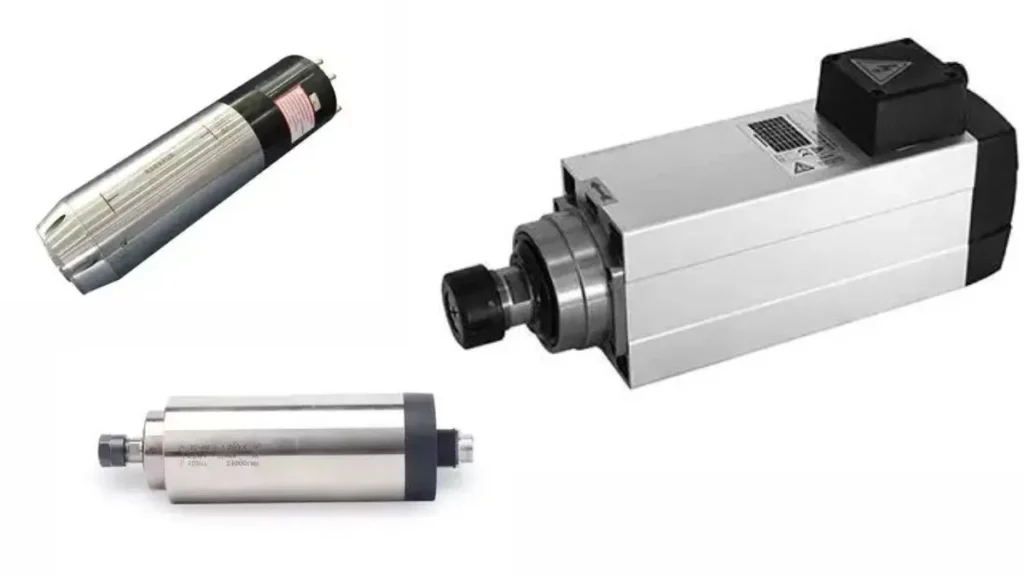Contents
Introduction
Spindle motors are a critical component in various industries, including manufacturing, automotive, and aerospace. These motors play a vital role in powering machines and equipment, enabling precise and efficient operations. In this article, we will provide a comprehensive crash course on spindle motor fundamentals, covering their types, working principles, advantages, and applications.
Understanding Spindle Motors
What are spindle motors?
Spindle motors are high-speed motors designed to rotate a shaft or spindle at high revolutions per minute (RPM). They are commonly used in machines that require precise and controlled rotational movement, such as lathes, milling machines, and CNC routers.
Types of spindle motors
There are several types of spindle motors, including AC motors, DC motors, and brushless DC motors. AC motors are commonly used in industrial applications due to their robustness and ability to handle high loads. DC motors, on the other hand, are preferred for applications that require precise speed control. Brushless DC motors offer the advantages of both AC and DC motors, combining high efficiency, low maintenance, and precise control.
Working Principles of Spindle Motors
Basic operation
Spindle motors consist of a rotor, stator, and bearings. The rotor is connected to the spindle or shaft, while the stator surrounds the rotor and contains the windings. When an electrical current is applied to the windings, a magnetic field is generated, causing the rotor to rotate.
Speed control and torque
Spindle motors can be controlled to achieve different speeds and torque levels. Speed control is typically achieved through variable frequency drives (VFDs) or electronic speed controllers (ESCs). Torque control is achieved by adjusting the current supplied to the motor windings.
Cooling mechanisms
Due to the high speeds and power output, spindle motors generate heat during operation. To prevent overheating, cooling mechanisms such as air cooling, liquid cooling, or a combination of both are employed. These cooling systems ensure the motor operates within its optimal temperature range, enhancing its reliability and lifespan.
Advantages of Spindle Motors
High precision and accuracy
One of the primary advantages of spindle motors is their ability to provide high precision and accuracy in rotational movements. This makes them ideal for applications that require tight tolerances and fine surface finishes, such as machining and engraving.
Durability and reliability
Spindle motors are designed to withstand heavy loads, high speeds, and continuous operation. They are built with robust materials and advanced engineering techniques to ensure durability and reliability in demanding industrial environments.
Compact size and low maintenance
Spindle motors are compact in size, allowing for easy integration into various machines and equipment. Additionally, they require minimal maintenance, reducing downtime and overall operating costs.
Applications of Spindle Motors
Manufacturing industry
Spindle motors are extensively used in the manufacturing industry for applications such as milling, drilling, cutting, and grinding. They provide the necessary power and precision required to shape and finish various materials, including metal, wood, and plastic.
Automotive industry
In the automotive industry, spindle motors are utilized in processes such as engine manufacturing, chassis assembly, and component fabrication. They enable precise machining and assembly of critical parts, ensuring the quality and reliability of vehicles.
Aerospace industry
The aerospace industry relies on spindle motors for the production of aircraft components, including turbine blades, engine parts, and structural components. These motors enable the precise machining and shaping of complex geometries required in aerospace manufacturing.
Other applications
Spindle motors are also used in a variety of other applications, including medical equipment, electronics manufacturing, and woodworking. Their versatility and ability to provide precise rotational movement make them indispensable in numerous industries.
Conclusion
Spindle motors are essential components in various industries, providing high-speed and precise rotational movements. Understanding their types, working principles, advantages, and applications is crucial for professionals in the manufacturing, automotive, and aerospace sectors. By harnessing the power of spindle motors, industries can achieve greater efficiency, accuracy, and productivity in their operations.











